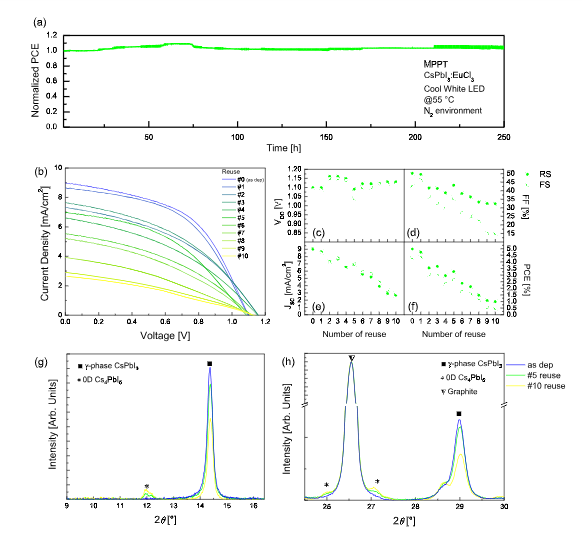Performance Evaluation of Printable Carbon-Based Perovskite Solar Cells Infiltrated with Reusable CsPbI3:EuCl3 and Standard AVA-MAPbI3
Valastro, S., Calogero, G., Smecca, E., Bongiorno, C., Arena, V., Mannino, G., Deretzis, I., Fisicaro, G., La Magna, A. and Alberti, A. (2024), Sol. RRL 2300944.
https://doi.org/10.1002/solr.202300944
The research demonstrates printable carbon-based perovskite solar cells infiltrated with CsPbI3:EuCl3 outperform AVA-MAPbI3 cells, showcasing reduced hysteresis, stable efficiency under continuous light, and notable durability with multiple reusability cycles. Achieving a peak power conversion efficiency of 16.72%, the CsPbI3:EuCl3 variant emerges as a promising candidate for sustainable and efficient photovoltaic technologies, with implications for enhancing the environmental sustainability of solar energy generation
How Setfos was used
Setfos tool was utilized for 1D transient-mode electro-optical simulations of the fabricated mesoporous carbon perovskite solar cells (mC-PSCs), incorporating both anion and cation migration within the active regions. This involved simulating the charge generation profile using the transfer-matrix method, calibrated with wavelength-dependent complex refractive indices of all layers, and coupling it with a drift-diffusion charge transport solver to account for charge trapping, recombination, and ion migration. The simulations aimed to replicate the measured J–V curves' main features, with layer-specific electrical parameters calibrated based on reasonable initial values from literature.

